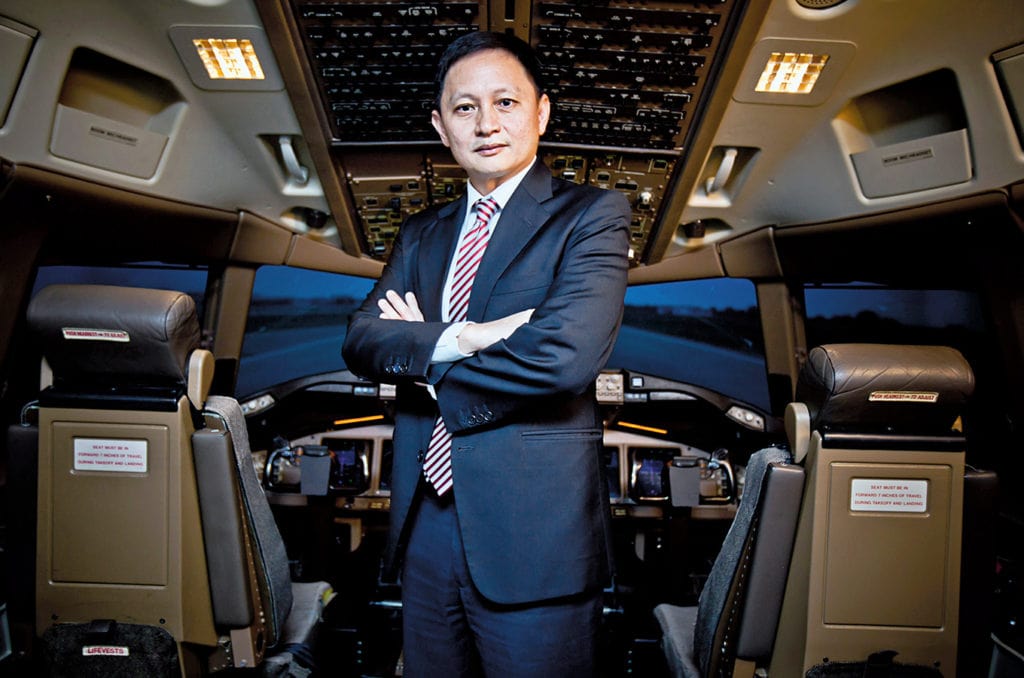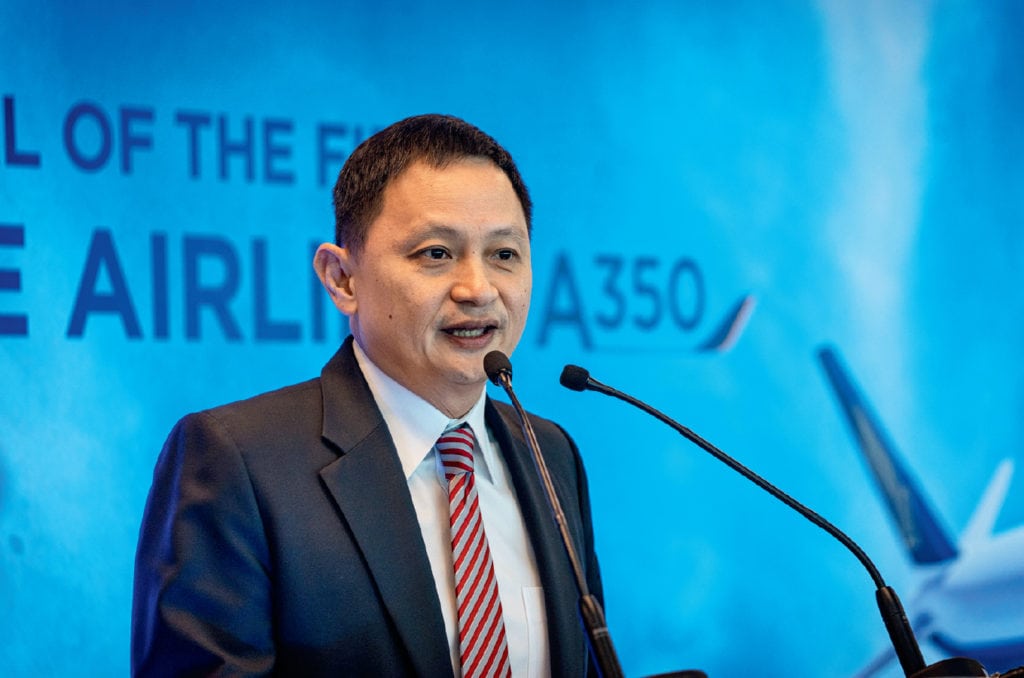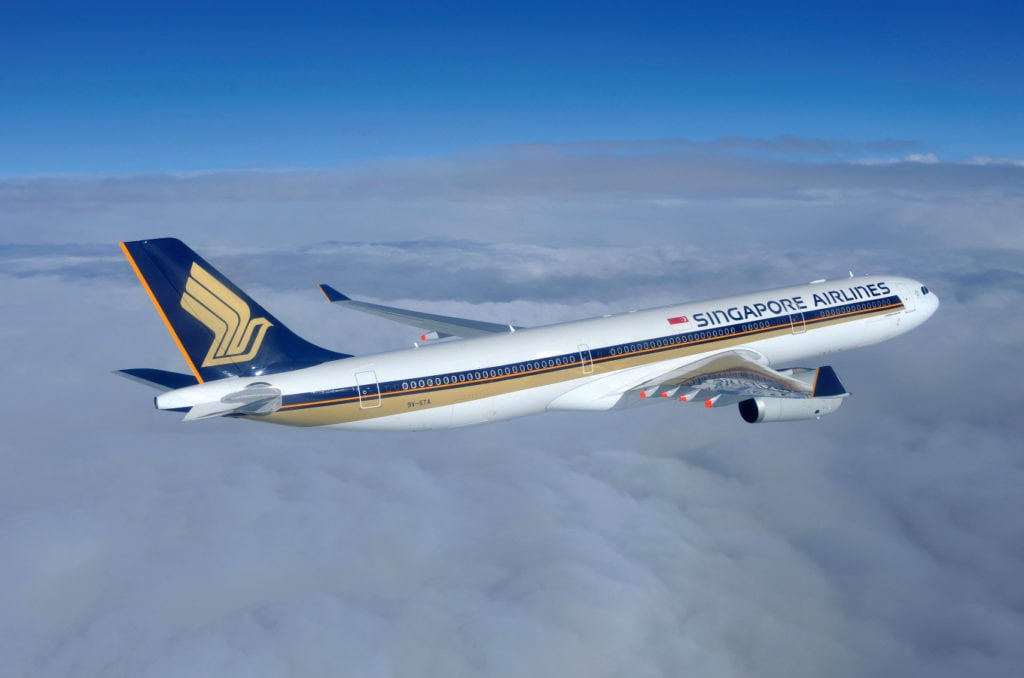C-Suite in Profile: Singapore Airlines CEO Goh Choon Phong
Share

APEX Insight: Goh Choon Phong chose Singapore Airlines over an academic career in artificial intelligence – using his own smarts to lead the legacy carrier, known for premium service and product, into an era where low-cost reigns.
On August 30, 1990, Goh Choon Phong, a 27-year-old hopeful graduate of MIT’s Electrical Engineering and Computer Science department, had come to a crossroads. With three bachelor’s degrees – computer science, management science and cognitive science – already under his belt, he had just submitted his thesis, “Model Selection for Solving Kinematics Problems,” in fulfillment of his master’s of science degree.
“Working on this thesis has been a wonderful experience, intermittent frustrations notwithstanding,” Goh wrote in his acknowledgments. “I have learned much from my own follies, and have benefited even more from the wisdom of many others.” Supervising his research at the Artificial Intelligence Laboratory was Randall “Randy” Davis, whose seminal work in knowledge-based systems and human-computer interaction undoubtedly shaped Goh’s studies. “Each discussion session with him was intense, thought-provoking and most refreshing. I hope I have learned at least a fraction of his teachings,” Goh wrote.
“When the landscape changed … we knew that we’d have to change ourselves.” – Goh Choon Phong, Singapore Airlines
Goh’s academic pursuits at MIT were encouraged by his parents and his older brother and sisters, and sponsored by Singapore Airlines. After completing his master’s degree, he faced two options: pursuing a PhD in artificial intelligence or returning to Singapore to work for the airline. “At that point, everything seemed more fascinating. The idea of doing research and contributing to knowledge creation was particularly fascinating to me,” he told Bloomberg nearly 25 years later. “Had I really [done my PhD], this could have led to a different career path for me, that’s the truth.” But Singapore Airlines called him back to join as a cadet administrative officer, and he answered.
Breaking With Tradition
The history of Singapore Airlines (SIA) begins with the first flights of Malayan Airways Limited on May 1, 1947, but the airline truly came of age in the 1970s, when it cut ties completely with its Malaysian forerunner. Singapore was emerging as the economic hub of Asia, and while Prime Minister Lee Kuan Yew’s government worked to quell the revolutionary hippies of the decade with bans against Beatles-esque hairdos, the young city-state’s flag carrier was preparing its premium-brand image for the world stage. Over the span of the decade, the airline would launch its now iconic Singapore Girl campaign, celebrate its first of many transcontinental flights and expand its fleet to include the Queen of the Skies, and even the Concorde briefly, in partnership with British Airways.
After earning a reputation that preceded itself, SIA was able to successfully coast through the turn of the millennium, maintaining its premium standard through regular upgrades as leadership changed hands. But, when Goh succeeded Chew Choon Seng in January 2011, the airline’s profit was at a record low. Chew had steered the airline through a rocky seven years that included recovery from the SARS outbreak and the economic slump in 2007-2009. Meanwhile, in Hong Kong, Cathay Pacific had become a formidable adversary at the same time as the Gulf carriers put pressure on Singapore’s premium stronghold. In the low-cost space, AirAsia, Lion Air and others added competition in an increasingly busy airspace just when corporate travelers began to tighten their belts.
“The time is appropriate for renewal of leadership in Singapore Airlines,” Chew said as he passed the torch. At 47, Goh had been with the airline for more than 20 years, having served in various divisions from marketing to IT, finance and cargo. As analysts questioned whether the airline’s glory days were in the past, Goh – an unfamiliar face to most – grabbed the reins of a group known for its conservative, slow-moving nature and prepared to face the coming turbulent years head on.

Multiply and Conquer
Goh’s implementation of a new strategic approach for the airline was swift and nimble. “I think everybody knows that SIA has always been focused on the premium segment of business, has always been focused on Singapore as a hub and has always been focused on the core airline business,” he said after being named CAPA Asia-Pacific Airline Chief Executive of the Year last year. “When the landscape changed quite drastically with the proliferation of low-cost carriers in the region, as well as the growth of the Gulf carriers, we knew that we’d have to change ourselves.”
To adapt the airline to a new climate, Goh aggressively rolled out a four-pronged approach that involved strengthening its core business and services, pursuing ancillary business streams, forging a multi-brand airline portfolio and targeting emerging markets through joint ventures.
In March of this year, the airline took delivery of the first of its 67 Airbus A350 XWB aircraft on order. Plans to launch nonstop service of the A350-900 aircraft from Singapore to San Francisco, as early as October, will enable a key expansion of the airline’s network to the United States. And in 2018, the addition of the ultra-long-range version of the aircraft to its fleet will enable the airline to add increased capacity to the US and officially lay claim to the world’s longest flight.
The entry of SIA’s A350 fleet into service was shortly followed with the opening of a $100-million Airbus Asia Training Centre, in partnership with Airbus, for pilot training at Seletar Aerospace Park. By investing in adjacent businesses, Goh hopes the company can leverage its skill set to tap new revenue streams.

Singapore Airlines Group now comprises four airlines – SIA, SilkAir, Scoot and Tigerair – covering a full spectrum of travel segments. Strategic partnerships with Lufthansa, Scandinavian Airlines, Air New Zealand, Turkish Airlines and high-value partner Virgin Australia have helped SIA quadruple its weekly codeshare sectors from approximately 2,000 to more than 8,000. By casting a wide net in a rapidly evolving marketplace, Goh told Business Times, “We now have the nimbleness, the flexibility, to adjust things if need be, even if the market changes.”
Overseas, joint partnerships have been signed to capitalize on growth in India and China’s fast-growing airspace, though neither market has been without its challenges. With more than 20 years invested in breaking ground in the Indian market, the country’s 5/20 rule, which forces domestic carriers to operate for five years with a fleet of 20 aircraft before introducing international service, has mired SIA’s 49-percent stake venture in Vistara. “It’s not going to be a walk in the park,” Goh told Bloomberg. “However, we believe that the huge potential is there and we want to have an early presence.”
An unsuccessful attempt to buy a stake in China Eastern Airlines in 2008 and recent hurdles faced by its Bangkok-based venture in NokScoot have hindered SIA’s network growth in China and Thailand, too. But among the group’s four airlines, it’s managed to boost service to 24 destinations in China. “We continue to be open to potential new ventures that make sense for the company, especially if it positions the company for the future,” he told Bloomberg. “So, if there is an opportunity for some sort of venture in China, we’ll look at it.”
Beyond the Call of Duty
Responding to the call of duty has underpinned Goh’s entire career with Singapore Airlines – from the moment he submitted his master’s thesis in 1990 to stepping up to the challenge of leadership in 2011. “I have no regrets,” he told Bloomberg with a smile, while looking back on his decision to join SIA over pursuing his PhD.
In the little spare time that he’s had in the past five years, Goh has spent it playing tennis, actively volunteering for Community Chest – a nonprofit organization for the less fortunate – and even trying his hand once or twice a year as a flight attendant. “It’s about working with our people [on the front line] and experiencing what they experience,” he told a local paper last December. “With management’s attention, things do get expedited, which is helpful.”
Leading by example has been the cornerstone of Goh’s quiet and efficient management of the airline – and has likely been why his staff has been so receptive to his direction for change. “Getting an organization to change focus is difficult enough,” he told Singapore Exchange. “Getting a complex organization to look beyond the success formula of Singapore and core airline operations, to diversify geographically and into new areas of growth was really tough. Kudos to the teams for how they all rallied together and executed as a whole.”


